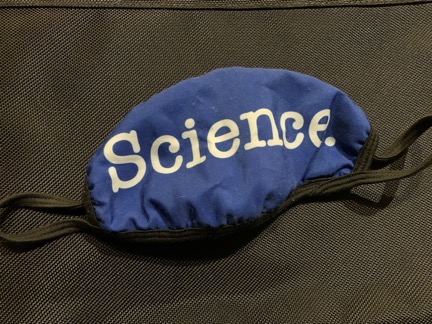Dial it down, for your sanity and the sanity of others.
Okay, I get it. You’re stuck mostly at home, possibly with a spouse and/or kids. Your routine has been upended and you have gaps in your day that you need to fill with something. So maybe you’re checking in on social media a little more than usual. Seeing what’s new with friends on Facebook or Twitter or Instagram or some other social networking platform I’m either too old or too young to be connected with.
I’m with you. Although my “routine” hasn’t changed much, as I discussed in my previous post, I have definitely been checking in on Twitter a lot more than usual. (I pretty much dumped Facebook about three years ago, although you will still find a half-dead account there for me.) And based on the increased number of new tweets coming in every minute or so, I have to assume that many of the folks I follow there have also ramped up their access. I suspect it’s the same on all social media platforms. You’re bored, you’re lonely, you’re stressed, you’re starved for information — for whatever reason, you’re online more, reading more posts, and sharing the posts you want everyone in the world to see.
Whoa. Take a step back and look hard about how it’s making you feel. That’s what I did about a week ago. I realized that all coronavirus/COVID-19 and all finger-pointing politics all the time was making me depressed and angry. And that’s not what I use social media for.
That said, I’d like to offer three tips for social media during the time of coronavirus.
General Tips for Keeping Your Sanity on TwitterOn March 4, I posted a Twitter thread with some advice for folks who were getting frustrated by the anger and hate being shared on Twitter. Here it is in its entirety; tweet by tweet:
As someone who has been on Twitter for nearly 13 years and has authored numerous training materials/articles about it, can I share some advice for folks frustrated by the anger and hate being shared here? (1/13)
First of all, don’t feed the trolls. If someone replies to you or someone else with nasty, hateful comments, do one of the following (1) ignore them, (2) mute them so you don’t need to see any more of their crap, … (2/13)
… or (3) block them so you don’t have to worry about them seeing/interacting with your tweets. I usually block because life’s too short to deal with assholes. (3/13)
If someone on Twitter is spewing hate against a group of people or otherwise violating the Twitter Terms of Service (TOS), report them and (optionally but recommended) block them. I consider it my duty to report these accounts. (4/13)
If you think an account is fake — remember, we’ve been warned that foreign actors are screwing with US elections — report and block it. It’s quick and easy. (5/13)
Don’t make things worse by trolling people you don’t agree with using nasty or offensive comments. Remember what they say about honey vs vinegar. (Google it.) 6/13)
Don’t believe ANYTHING you read on Twitter unless it’s from a reputable source or you’ve read it elsewhere on an independent reputable source. Related: anyone can cook up a chart or graph or “poll results” to fool you. Ditto for photos these days. (7/13)
Related: just because you agree with something and WANT it to be true doesn’t mean it IS true. (8/13)
Don’t share information you have any reason to believe might not be true. (See above.) There’s enough bad information out there — don’t add to it! (9/13)
Follow folks who tweet about the things that interest you most. If you’re sick of politics, unfollow folks who tweet/retweet political things. You can always follow them again later. And don’t be offended if people unfollow you. (10/13)
Understand that I’m not telling you to close your mind to other ideas. I’m telling you to keep things civil in your discourse, share (and believe) factual things, and be aware that foreign operators are actively trying to disrupt our elections. Don’t let them suck you in! (11/13)
And finally, remember that Twitter is what you make it. Follow only the accounts that really interest you and stick to viewing “latest tweets” instead of “top tweets” to ensure that YOU are the one curating your Twitter feed. Block the bad actors. (12/13)
Social media is not real life. Remember that, whether you’re on Twitter, Facebook, or any other platform. When it stresses you out, take a break.
See you online. (13/13)
1. Curate your newsfeed.
On Twitter, if you have settings adjusted just right, you should see only three kinds of tweets:
- Tweets posted by the accounts you follow. You have absolute control over this. If you don’t like what someone tweets, don’t follow them.
- Tweets retweeted by the accounts you follow. You have some control over this, too. If you don’t like what someone retweets, you can turn off retweets for that account. If there’s one particular account that a Twitter friend retweets that you really don’t want to see, you can mute that account.
- Ads. Unfortunately, you don’t have much control over that. (But cut Twitter some slack since they really do need to make money somehow.)
This is Twitter. Facebook is a whole different animal, one I’m very glad that I no longer deal with. But you do have some control on Facebook, too. Unfriend people or simply don’t include their posts in your newsfeed. Ditto for Instagram and others.
On Twitter, you can further curate your newsfeed by muting tweets that contain certain words, phrases, or hashtags. This comes in really handy if you don’t want to see any tweets about, say, #COVID19 or #coronavirus.
(For instructions on doing any of these things, consult the Help feature of the social media platform you’re dealing with. Don’t ask me. I don’t do technical support anymore.)
Last week, I started unfollowing a lot of Twitter accounts that post primarily about politics and/or coronavirus. I didn’t mute any terms; I just stopped following accounts that were posting stuff that was making me stressed or angry. This includes highly respected journalists and politicians who I can count on to provide accurate information. The trouble is, I was sick of reading about the government’s handling of the coronavirus crisis. (Widely shared opinion, backed up by facts: The Trump administration fucked up and continues to do so in a variety of new and anger-inducing ways. I get it already.) I also stopped following accounts that were posting content from unreliable sources, much of it written to stoke emotions or mislead. (See sidebar.)
But yeah: I stopped following accounts which, in many cases, were following me. Sorry folks, but I’m on Twitter for me, not you, and I’ve already voiced my opinions on the popularity contest.
The ones I didn’t want to stop following — most of them real friends who I know personally — were closely examined for what they retweeted. If I found that they kept retweeting the same political pundit over an over, I simply muted that pundit’s account. This way, when they retweeted without comment, I wouldn’t even see the tweet.
I also started following other accounts that tweeted more upbeat content, much of which has nothing to do with these difficult times. I’ve embraced Twitter’s pilot community and even attended a video conference virtual fly-in with pilots from the US, Canada, and UK. And who doesn’t love pictures of baby goats?
The result: my Twitter feed is a much less stressful place.
2. Don’t share crap.
Ah, crap. It’s the word I apply to any content that is obvious click-bait (see sidebar), is written to generate a (usually negative) emotional response, and/or contains fallacies or half-truths that mislead. Basically anything from the far left or far right news media is probably crap, although I can’t limit it to those sources.
When you share these things, you spread the crap around. Think about that literally for a moment: having some sort of shovel or spatula and using it to spread crap where it’s under everyone’s nose. Do you really want to do that?
How can you tell if something is crap? You can’t always. I usually refer people to the Media Bias Chart, which displays the logos of media outlets on a chart to indicate overall reliability and political bias. Basically, if you’re getting your information from one of the sources in the green box, it shouldn’t be crap. Although that chart is updated often and you can view it online, you have to pay to download it. Here’s a taste of version 5.1; I urge you to follow the link to see the full chart and use it to evaluate your favorite sources:

Here’s a tiny piece of the Media Bias Chart v5.1. If your favorite news source isn’t in the green box, you’re probably not getting real news.
For the record, I get my news from NPR, the Washington Post, BBC News, and the Guardian (which doesn’t appear to be listed). I occasionally read the New York Times, but they piss me off more often then not.
3. Share upbeat or useful stuff.
What has truly amazed me is the quantity of (usually) non-political content that’s poking fun at our dire situation in a way that makes it palatable. Yeah, life sucks right now and it’s likely to get worse here in the US before it gets any better. And with the economic ramifications, we’re likely to be feeling it for a long time to come. But hey! We’re all in the same boat! Let’s look on the bright side of things.
Many of my Twitter friends have been tweeting or retweeting videos that make me laugh — or at least smile. They show off the creativity and resourcefulness of strangers in the world around us. There’s no hate, no anger. There’s just fun. That’s the kind of stuff you should be sharing with your social media friends. Don’t share hate, anger, frustration, and finger pointing. Share entertaining or enlightening content that makes people happy.
You might also consider sharing useful information. I ran across a video last week that explained how to create masks that could be used (and reused) by local hospitals. Guess what? They can also be used by you when you go out and do your grocery shopping. If you have a sewing machine and some fabric and elastic, you can whip up a mask — or enough for your family — in no time. And if your local hospital has a mask shortage, contact them and see if you can make masks for them, too.
Similarly, I’ve also seen posts about food storage and recipes. New family games. Home schooling. Video conferencing. Working from home. Staying in touch with family or friends. Keeping your sanity. That’s the kind of content we should be sharing now. The kind of content that can improve our world and, possibly, bring people together.
We’re all in the same boat. Why would you want to poke holes in it with divisive or hateful content?
Above All, Remain Calm and Carry On

Rosie (top) and Lily lounging on my bed. They’re calm; you should be, too.
The situation sucks — you don’t have to tell me. It’ll get worse here — that’s a given. But we can get through this together. Do your part and I’ll do mine.
Now enjoy this photo of my two puppies and relax.





 The reason I usually block people is because of their unreasonably voiced political views. You know the kind of folks I mean: the ones who watch Fox News and echo the bullshit they’ve been fed there. The ones with #MAGA in their Twitter profiles. The ones who share obnoxious memes that bash Obama or Clinton or liberals in general.
The reason I usually block people is because of their unreasonably voiced political views. You know the kind of folks I mean: the ones who watch Fox News and echo the bullshit they’ve been fed there. The ones with #MAGA in their Twitter profiles. The ones who share obnoxious memes that bash Obama or Clinton or liberals in general. Okay, folks. Most of you should know that I’ve pretty much
Okay, folks. Most of you should know that I’ve pretty much